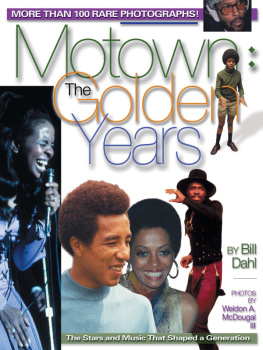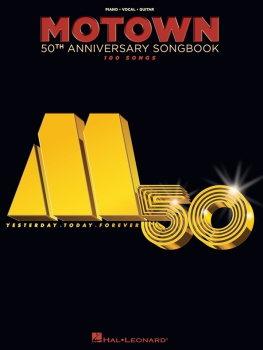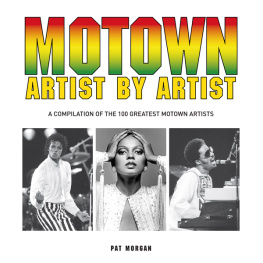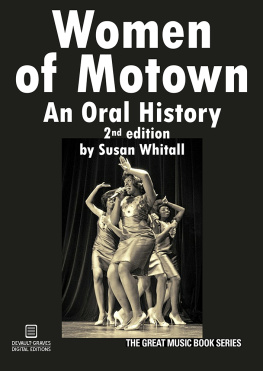Motown:
The Golden
Years
The Stars and Music That Shaped a Generation
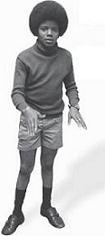
BY Bill
Dahl
PHOTOS
BY
Weldon A.
McDougal
III
2001 by
Bill Dahl
All rights reserved.
No part of this publication may be reproduced or transmitted in any form or by any means, electronic or mechanical, including photocopy, recording or any information storage and retrieval system, without permission in writing from the author, except by a reviewer who may quote brief passages in critical article or review to be printed in a magazine or newspaper or electronically transmitted on radio or television.

Published by:
Krause Publications
700 E. State Street
Iola, WI 54990-0001
Telephone: 715/445-2214
Web: www.krause.com
Please, call or write us for our free catalog of antiques, collectibles, sports and music publications. To place an order or receive our free catalog, call 800-258-0929.
Library of Congress Catalog Number: 2001090717
ISBN: 0-87349-286-2
eISBN: 978-1-44022-557-4
Printed in the United States of America
DEDICATION
To Margie Dahl , who instilled a love of swinging, soulful music in me at a very young age that refuses to fade (just like my love for her).
CREDITS
The author and editors extend a special thank you to the following people and companies for their photo contributions to this book:
David Alstons Mahogany Archives: Photos, picture sleeves, records
Hank Thompson: Motown concert posters
John Rothenberg: Supremes albums covers
Orpheus: Sheet music covers
BMI Archives Photo Collection: Photos
Robert Pruter: Record album covers
George Livingston: Photos
Allan Slutsky: Photos
CONTENTS


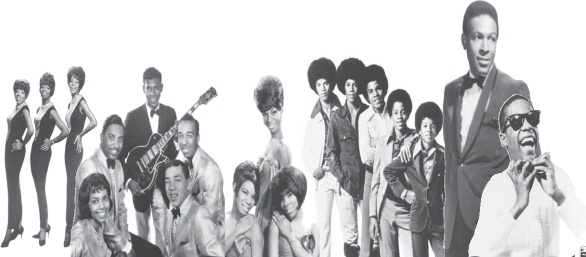
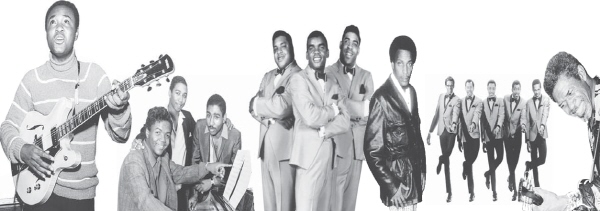
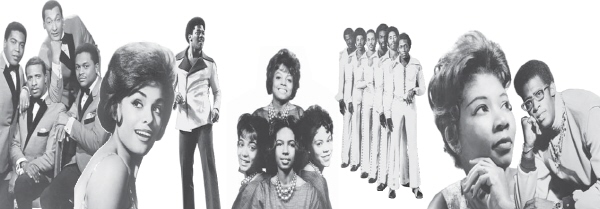
I ts a daunting prospect to write a book about Motown. After all, millions of words have already been committed to paper about the greatest rhythm and blues label of the 1960s, the company that obliterated the chasm between soul and pop and launched the careers of a dozen superstars. There have been beautifully illustrated coffee table examinations of the label, honest and revealing autobiographies of its stars, and a few sleazy tell-all tomes that deserve permanent enshrinement in the nearest trash barrel. In researching this volume Ive read most of them, and credit their combined insights accordingly in the bibliography.
Instead of focusing on the sociological implications of the Motown story (and theyre gargantuan), this book examines the music that Berry Gordy and his associates marketed during the labels golden years and the myriad artists, writers, and producers that worked so diligently to conceive it. The Motown story officially began in early 1959, when Marv Johnsons Come To Me was the first 45 to proudly bear the Tamla label (though in reality it harks back a couple of years before that, when Berry Gordy began writing and producing hits for other labels), and we end in 1972, when the company pulled up stakes and headed west to Los Angeles. In any event, its a convenient stopping point for a logo that thrives to this day under corporate ownership. The book is divided into three partsa basic overview of the golden years, in-depth examinations of the superstars most inexorably associated with Motown (and the band that backed them), and shorter bios on the rest of the greats that comprised the labels talent roster in the last section.

Weldon A. McDougal III
The genesis for the project was the revelation that Weldon A. McDougal IIIformer Motown promotion guru (he traveled extensively with Motowns top artists on the road, introducing them to the important deejays who could make or break their next release while making sure that everything ran smoothly for his acts at their shows) and one-time director of special projects for the labelhad a treasure trove of candid photos from the late 60s and early 70s that deserved publication in book form. Weldon snapped most of his pictures in color, and the ones gracing this book offer a rare glimpse of Motown royalty in more relaxed settings than circumstances generally allowedletting their hair down after concerts, during the creative process, or playfully posing for the camera (there are a few striking performance shots as well).
Weldon had already made a name for himself in the music industry before he began working for Motown. He was one-quarter of the Larks, a doo-wop group that hit in 1961 with Its Unbelievable, and a successful producer (he formed Harthon Productions with Luther Randolph and Johnny Stiles and produced releases by Eddie Holman, the Volcanos, Barbara Mason, and a wealth of other mid-60s notables). Weldon was surely the only full-time Motown employee allowed to retain his residence in his hometown of Philadelphia rather than moving to the Motor City.
Born October 28, 1936, McDougal was bitten by the doo-wop bug while attending West Philadelphia High School. It was a group called the Dreams, and another group called the Castelles, and both of the lead singers were my friends, said Weldon, who adds his first-person insights on the stars he knew as friends throughout the book. George Grant was in the Castelles, and George Tindley was in the Dreams. They used to get so much notoriety when wed go to schooleverybody was talking to themthat I wanted to sing with them. And they wouldnt let me sing with them. They said, Why dont you get your own group, man? So thats what I did.
American Bandstand was airing live every day after school a few blocks from Weldons house, and the tall lad snagged a gig as a doorman at the TV studio prior to enlisting in the Marines. When he got out of the service in 1959, he reassembled the Larks. It took a year before I finally found the guys that were the Larks, that we finally recorded, he said. Jerry Ross produced their Its Unbelievable, which rose to No. 69 on Billboards pop charts in early 61 on the strength of Jackie Marshalls strong lead tenor and the harmonies of Calvin Nichols, Earl Oxendine, and the deep-voiced McDougal. Talk about full circle: the Larks guested on Dick Clarks legendary TV program one day, sharing the spotlight with future Motown star Chuck Jackson.
Philly was loaded with R&B talent. Screamin Jay Hawkins used to live in my neighborhood. There was a hoagie store across the street from where he lived. So it was a running joke: You ever see his casket out there, you know hes home, said Weldon. If you ever messed with his casket, he would go off. And the thing that was so ironic about it, it was sitting outside of his door!
Next page
